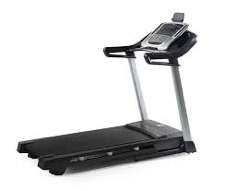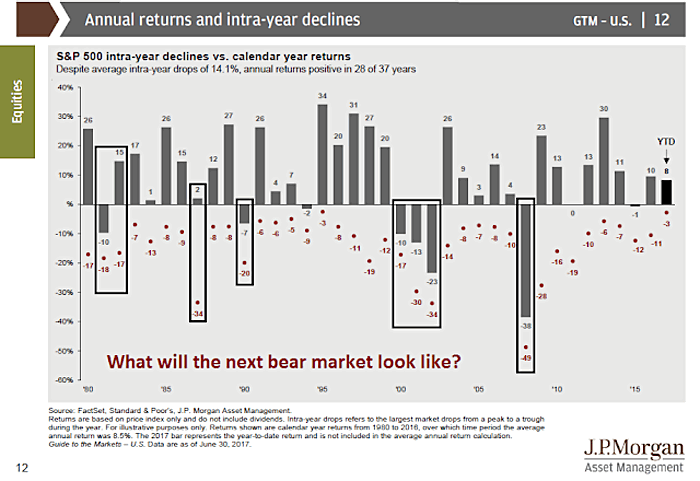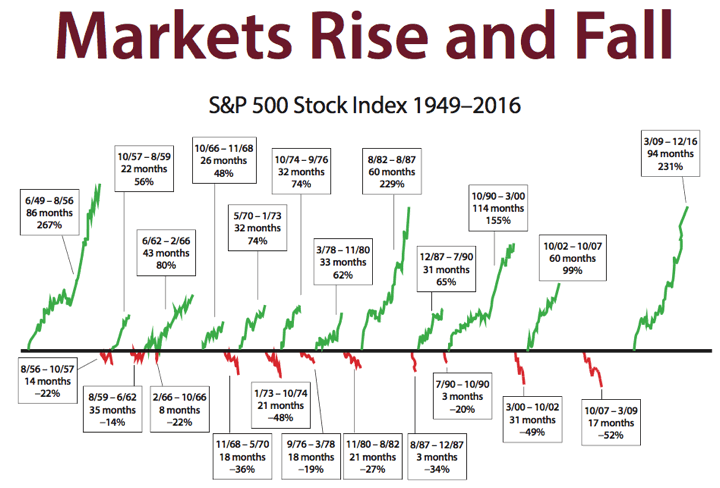 After my last quarterly portfolio update, I rebalanced back to my target asset allocation this week. I sold some US stocks and went from 70% stocks/30% bonds back to 67% stocks/33% bonds. (I bought a little Emerging Market stocks as well.) In preparation for living off my portfolio, I also recently increased my separate “emergency fund” to two years of household expenses.
After my last quarterly portfolio update, I rebalanced back to my target asset allocation this week. I sold some US stocks and went from 70% stocks/30% bonds back to 67% stocks/33% bonds. (I bought a little Emerging Market stocks as well.) In preparation for living off my portfolio, I also recently increased my separate “emergency fund” to two years of household expenses.
This is all part of my normal investment plan, but current prices do show a market valuation that is pretty darn optimistic. If we get Vanguard’s expected asset class returns along with their projected inflation of a bit under 2% annualized, I’d be actually be fine with that.
Of course, the real fear is something much worse – a severe recession and extended bear market. I like to imagine this ahead of time and give myself a mental “stress test”. This is more about imagining your future behavioral responses than running fancy computer simulations.
A simple version of such a crash scenario is to imagine the following:
- Your stock holdings drop by half over a short period.
- Your bond holdings have zero total return for the same period.
Below again is a chart including multiple 50% drops.
In addition, here is a JP Morgan AM slide that shows that sharp intra-year drops are much more common than you might think from just looking back at annual returns:

My personal portfolio is basically 33% US Stocks, 33% International Stocks, and 33% Bonds (33/33/33). In the crash scenario above, my portfolio balance would drop by 1/3rd and my new asset allocation would be 50% stocks and 50% bonds.
Based on past experience, I will probably find it difficult to keep buying stocks as they keep dropping. However, I will probably find it tolerable to hold on without selling. This might be a hoarder thing, although I actually don’t do that much with physical stuff.
How long could I hold out in a crash scenario? I think in term of “years of expenses”. First, I have my two years of expenses in cash. My withdrawal rate is 3%, so if I didn’t want to touch my stock holdings, I could withdraw funds out of my bond holdings alone and still have another 11 years of expenses (33% divided by 3). This would be my form of “rebalancing”. Instead of selling bonds and buying stocks, I’d just gradually sell bonds and buy food. 😉
In addition, my stock holdings would still distribute dividends. Right now the dividend yield is about 2%, but maybe in a severe recession the total dividend also drops to half of the original amount. Taking the cash, bonds, and depressed stock dividends together, I could go about 17 years without selling a single share of stock.
Hopefully, stocks will rebound well before 17 years pass. People like to point out that to get back to even after a 50% drop, you’d have to have a 100% rise. True. But look at the chart above again… 100%+ rises happen more frequently than 50% drops. It’s easy to forget how crazy the swings can be in both ways. Staying out of the market at the wrong time hurts too.
There are other options that are less fun and harder to count on. I could spend less money. Cutting back might come more easily when everyone else is cutting back as well. I could get more work. It might be harder to find a job in a severe recession, but even a lower-paying job would help.
Bottom line. This is my rambling stress test as someone planning to live off their portfolio for another 40+ years. Hopefully, you’ve gone through something similar that fits your situation. If you’ve got a good steady job, maybe it’s most important to ignore the noise and ABC (Always Be Contributing). Some retirees put 5 years of expenses into cash or bank CDs so they “know” that they can last 5 years without having to take money out of a depleted portfolio. If that sounds like a good idea, I’d do it sooner rather than later. There are many bank CDs earning around 3% APY right now.

 The Best Credit Card Bonus Offers – 2025
The Best Credit Card Bonus Offers – 2025 Big List of Free Stocks from Brokerage Apps
Big List of Free Stocks from Brokerage Apps Best Interest Rates on Cash - 2025
Best Interest Rates on Cash - 2025 Free Credit Scores x 3 + Free Credit Monitoring
Free Credit Scores x 3 + Free Credit Monitoring Best No Fee 0% APR Balance Transfer Offers
Best No Fee 0% APR Balance Transfer Offers Little-Known Cellular Data Plans That Can Save Big Money
Little-Known Cellular Data Plans That Can Save Big Money How To Haggle Your Cable or Direct TV Bill
How To Haggle Your Cable or Direct TV Bill Big List of Free Consumer Data Reports (Credit, Rent, Work)
Big List of Free Consumer Data Reports (Credit, Rent, Work)
One suggestion is that you can juice your returns and actually lower your correlation to the market using certain securities. McDonalds is an example of one such stock that can have a dramatic effect on your portfolio. There are others. You will find that if 10-15% of your portfolio consists of a diverse basket of such stocks, you can almost insulate your entire portfolio (at least based on historical data) of almost any drop during any year once you consider dividends, yet you can still average 8%+ returns.
This goes to the whole piece of mind conversation that I have with people. We keep a year’s worth of cash, about 1/3 in I bonds, 1/3 in TIPS, and 1/3 in high yield accounts. Some say that’s too much, but that’s where our piece of mind. One factor is that our home is in a expensive region, and that if something goes wrong, it’s not cheap to repair our home.
I agree, even with the reports of a low unemployment rate, I’ve still had friends lose their jobs unexpectedly.
Are you still working part time and are you counting on that income in the case of a crash or are you presuming no job income while living off the portfolio?
And if you’re able to buy during a bear market, is your plan to buy stock funds or individual dividend yielding stocks or both? I have some of both and am trying to formulate a more comprehensive plan than just “have cash, buy when the market crashes.”
Obviously I’ve been running through these calculations as well. While we both still have good full time incomes, I’m preparing our financial holdings to withstand a job loss during the recession to come (whenever it hits) because I lost my “good / stable” job during the last one and it’d be foolish not to prepare. Heck, friends are losing jobs unexpectedly now, no one is immune!